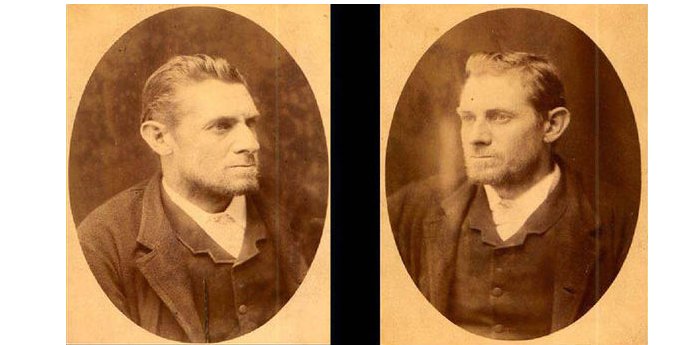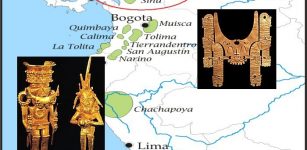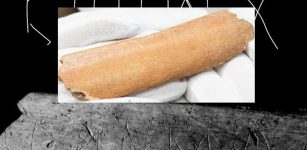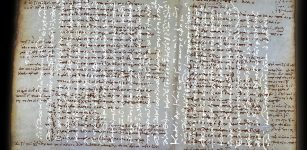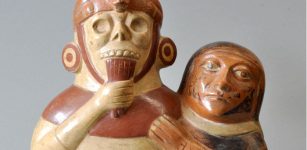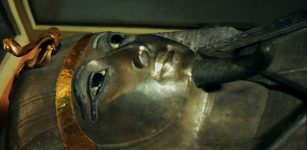Historian Suggests Jack The Ripper Fled To Australia Where He Met His End
AncientPages.com - The true identity of Jack the Ripper has never been solved. There are rumors, speculations, but who Jack the Ripper was remains an unsolved mystery.
Now a historian suggests he has found evidence the famous serial killer fled from London to Yorkshire and later to Australia where he met his end.
Jack the Ripper is the best known name given to an unidentified serial killer generally believed to have been active in the largely impoverished areas in and around the Whitechapel district of London in 1888.
Jack the Ripper. Drawing of a man with a pulled-up collar and pulled-down hat walking. "
The name "Jack the Ripper" originated in a letter written by someone claiming to be the murderer that was disseminated in the media. The letter is widely believed to have been a hoax, and may have been written by journalists in an attempt to heighten interest in the story and increase their newspapers' circulation. The killer was called "the Whitechapel Murderer" as well as "Leather Apron" within the crime case files, as well as in contemporary journalistic accounts.
According to local historian Mike Covell who is the author of the book Jack The Ripper – Or Something Worse? the killer was Fred Deeming who laid low in Hull following the East End killings, posing as a wealthy rancher.
Dovel has researched the Jack the Ripper story for many years. He has gone through archives in the UK and Australia, including long-lost files at the Home Office and Scotland Yard.
In 1892, Frederick Bailey Deeming was hanged at Melbourne Gaol.
He has since been accused of killing two of his wives and four children. At the time, the international press discussed whether or not he was the infamous Jack the Ripper.
Now, using previously unseen documents from around the world, the true story of Frederick Bailey Deeming can be revealed. Featuring a wide range of historical contemporary primary sources, official files, inquest reports, telegrams, correspondence, and newspaper accounts from local, national and international sources.
Learn about Deeming's early life through hitherto unseen material.
Learn about his frauds, bigamy, and travels around the world.
Discover previously unseen files thought lost in archival centres around the world.
All fully referenced, with an extensive source list and bibliography. Read more
According to Dovel, Jack the Ripper was Frederick Bailey Deeming (30 July 1853 – 23 May 1892), an English-born Australian gasfitter and murderer who was convicted and executed for the murder of a woman in Melbourne, Australia. He is remembered today because he was suspected by some of being the notorious serial killer, Jack the Ripper.
According to research by Covell, Deeming’s name appeared in a number of Scotland Yard reports on the Whitechapel murders.
A London dressmaker Deeming had been courting in 1888 came forward at the trial to claim he was The Ripper. Scotland Yard dismissed Deeming as a suspect in 1888 and he left London.
In 1889, he showed up in Beverley, East Yorkshire, calling himself Frederick Lawson, a millionaire Australian rancher.
Frederick Bailey Deeming (1853-1892)
After months courting women around Hull, the still wed Deeming married Nellie Matheson in 1890, but he was then jailed for nine months for fraud.
Shortly after his release in July 1891, 18-year-old Mary Jane Langley was found dead in a ditch near the jail with her throat cut.
Deeming returned to his first wife, who had been trying to blackmail him while in jail.
He murdered her and their four children and buried them in cement under the kitchen floor.
He had already met wife number three Emily Mather, 25, and the couple emigrated to Melbourne. Emiliy suffered the same fate as the other women. Deeming strangled Emily during a row on Christmas Day 1891.
When Deeming was arrested the police found a collection of knives, swords and axes.
Scotland Yard had taken a belated interest when the bodies of his family were found and they rushed to the trial in Melbourne. Deeming was hanged for the murder.
Speculation as to the identity of Jack the Ripper: cover of the 21 September 1889, issue of Puck magazine, by cartoonist Tom Merry
“Previously Deeming was thought to be in prison at the time of the Whitechapel murders. But I have found out this was not the case. A newspaper stand vendor described how Deeming always bought loads of newspapers after the murders and seemed very excited to read about them,” Dovel said.
Deeming's movements at many stages of his career are obscure, but it appears he may have been in England in late 1888, the time of the Whitechapel murders. Speculation that Deeming was Jack the Ripper continues today and Robin Napper a former Scotland Yard detective and currently forensic researcher, along with a team of researchers, came to the conclusion that most of the evidence leads to Deeming as Jack the Ripper.
We can only wonder – Will the Whitechapel Murders ever be solved and will we ever find out who Jack the Ripper was?
AncientPages.com



